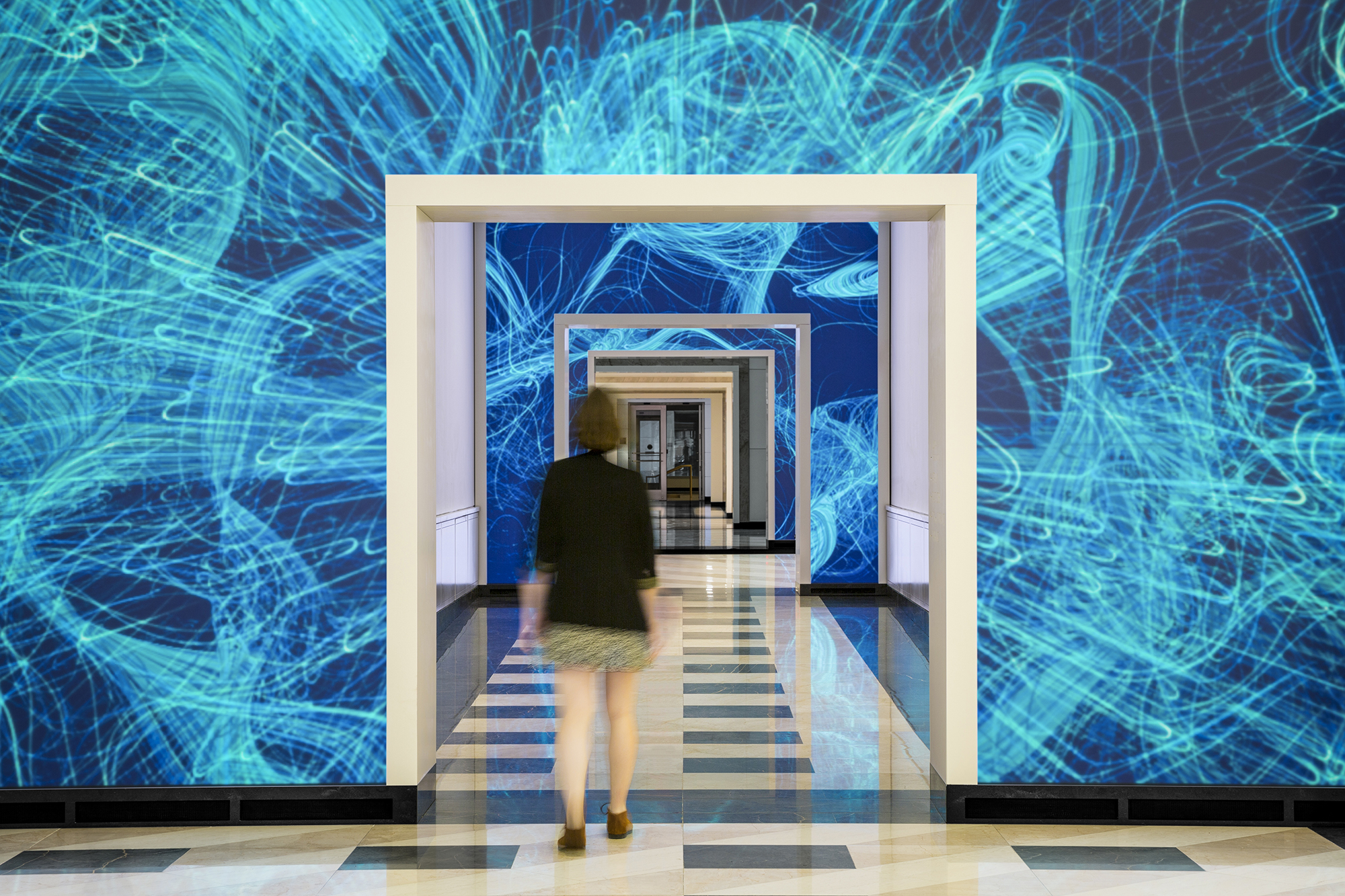NBBJ, the global architecture and design firm, today announced that it has acquired experience design studio ESI Design. The acquisition signals a new era where buildings will be transformed into immersive and interactive digital experiences that engage and delight.
By joining forces, NBBJ and ESI Design’s multidisciplinary team will be able to integrate digital experiences early in the design process, providing clients with more impactful and streamlined services.
Sweeping advancements in technology, from miniaturization to contemporary light projection technology, will make it possible for NBBJ and ESI Design to bring the type of immersive experiences that are increasingly desired as digital centerpieces in museums, stadiums, and transportation hubs to a wider range of industries, including healthcare, education, civic, commercial real estate, and science.
The two firms—which have previously collaborated on commercial real estate and corporate workplace projects in Boston and New York City—will now provide unified solutions as one of the largest and most robust experience design platforms in the country.
“By integrating the design of architecture and dynamic digital experiences, we will create boundless opportunities to energize the places we live, work, and play to stimulate our senses and inspire discovery, learning, and impact” said Steve McConnell, FAIA, Managing Partner of NBBJ. “The acquisition of ESI Design brings this vision to life and increases NBBJ’s ability to serve our clients as they activate their brands, create community, inspire wellbeing, and thrive.”
NBBJ is one of the largest architecture and design firms in the world, with clients that include Amazon, the Bill & Melinda Gates Foundation, Massachusetts General Hospital, Microsoft, and the University of Oxford. ESI Design has most recently received critical acclaim for its design of the immersive visitor experience at the Statue of Liberty Museum, which opened in May 2019. Other clients include Barclays, eBay, The Ellis Island National Museum of Immigration, PNC Bank, and WarnerMedia.
“We are at an exciting moment in time where the diverse skillsets of digital designers, media architecture technologists, gaming engineers and storytellers will partner with architects to create buildings as places that are lively, engaging and evolving,” said Edwin Schlossberg, the founder and principal designer of ESI Design. “NBBJ and ESI Design share a vision that well-designed spaces can bring ideas and brands to life in ways that inform, inspire, and delight. Through our partnership we will push the boundaries of what a building can be and help our clients bring people closer together through shared experiences – by seeking to design in ways that enable the environment to learn from its users so that it, and them get better with use.”
ALSO SEE: Tech Report 5.0: Digital Immersion
Under the agreement, ESI Design becomes NBBJ’s 18th studio. As part of the acquisition, Schlossberg becomes a partner at NBBJ and will lead the ESI Design studio at NBBJ.
Six ESI Design leaders will become principals at NBBJ: Alexandra Alfaro, Angela Greene, Cara Buckley, Emily Webster, Layne Braunstein, and Susan Okon. NBBJ will retain two office locations in New York City: The NBBJ New York office at 140 Broadway and ESI Design, an NBBJ studio at 111 Fifth Avenue. This will create a presence of 160 NBBJ employees in New York City, bringing the firm’s total employees to more than 800 worldwide.
Related Stories
| May 15, 2013
Schneider Electric announces Global Xperience Efficiency Events for 2013
Schneider Electric’s Xperience Efficiency series will begin with events in the United States, China, Colombia, Brazil and Russia.
| May 15, 2013
Center for Green Schools, Architecture for Humanity release new tool for green schools
The 70-page guide demystifies the processes of identifying building improvement opportunities and finance and implementation strategies.
| May 14, 2013
Paints and coatings: The latest trends in sustainability
When it comes to durability, a 50-year building design ideally should include 50-year coatings. Many building products consume substantial amounts of energy, water, and petrochemicals during manufacture, but they can make up for it in the operations phase. The same should be expected from architectural coatings.
| May 14, 2013
Advanced turbines generate 6X more energy than conventional models
US-based wind energy company SheerWind just unveiled the INVELOX – a tunnel-based wind turbine that can produce up to 600% more power than traditional wind turbines.
| May 14, 2013
Raymond Clark joins HOK’s Chicago Practice as Management Principal
HOK announced today that Raymond Clark, AIA, LEED AP, has joined its leadership team in Chicago as senior vice president and management principal.
| May 14, 2013
Easy net-zero energy buildings [infographic]
"Be a Zero Hero" infographic educates building industry professionals on ultra energy-efficient structural insulated panel construction
| May 9, 2013
10 high-efficiency plumbing fixtures
From a "no sweat" toilet to a deep-well lavatory, here's a round up of the latest high-efficiency plumbing fixtures.
| May 9, 2013
Post-tornado Greensburg, Kan., leads world in LEED-certified buildings per capita
Six years after a tornado virtually wiped out the town, Greensburg, Kan., is the world's leading community in LEED-certified buildings per capita.
| May 8, 2013
Preventable curtain wall failures - AIA/CES course
In many cases, curtain wall failures are caused by fairly simple errors that occur during the fabrication and installation process. This presentation will highlight common errors and when they typically occur.

















